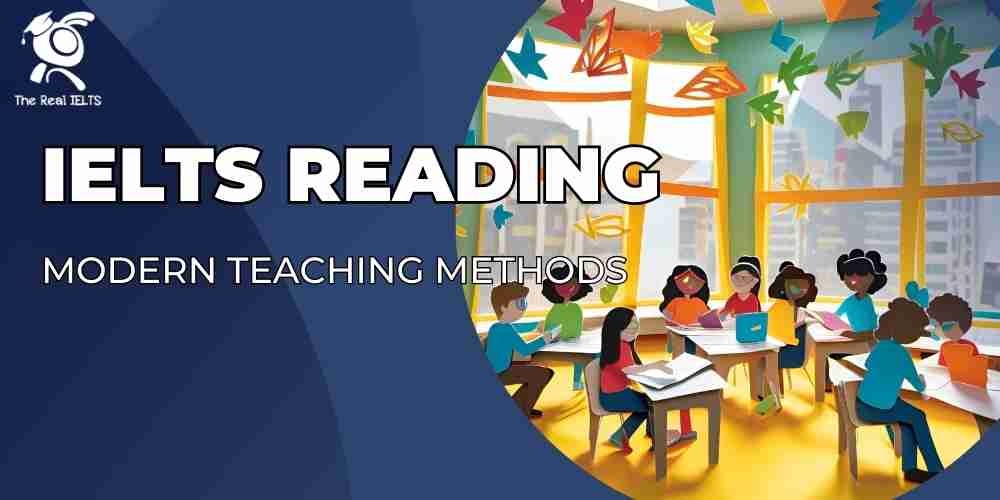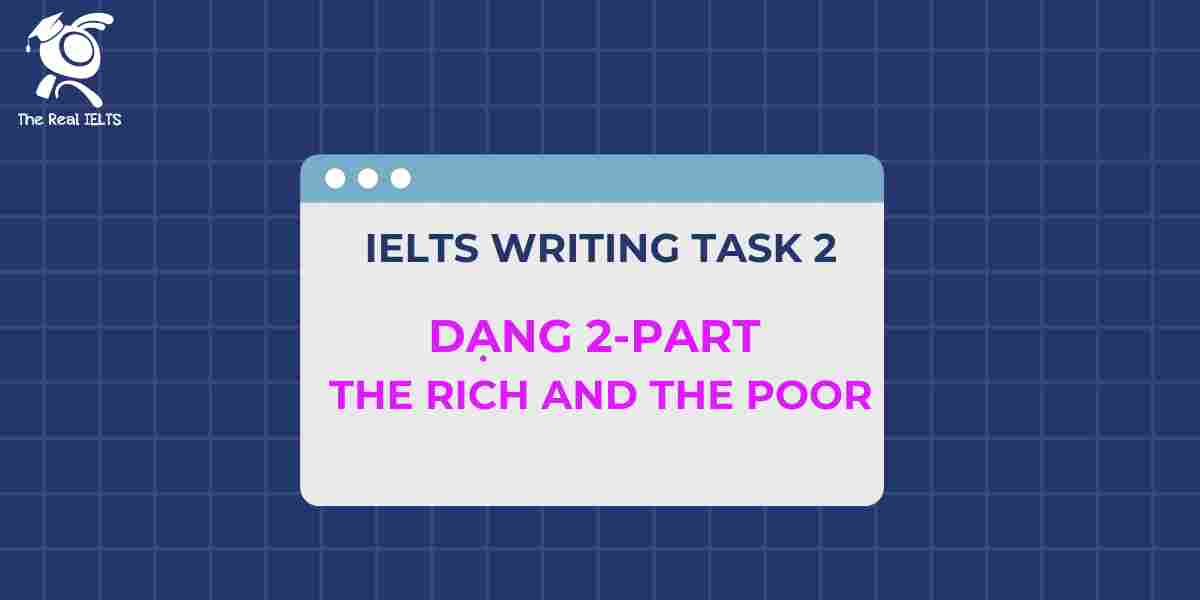IELTS Reading 27: Mental health issues là chủ đề thuộc chuỗi bài luyện tập 11 dạng bài IELTS Reading và các bài tập luyện tập.
Học lại bài cũ: IELTS Reading 26: Importance of regular exercise.
IELTS Reading: Mental health issues
Mental health issues affect a large portion of the global population. Despite the increasing awareness, many people still find it challenging to discuss their struggles due to the stigma surrounding mental health. This passage will explore the various types of mental health disorders, their causes, and current treatment approaches.
Types of Mental Health Disorders
Mental health disorders encompass a range of conditions, each with unique symptoms and challenges. Some of the most common types include:
- Anxiety Disorders: This category includes conditions like generalized anxiety disorder (GAD), social anxiety, and panic disorder. Individuals with these disorders often experience intense feelings of worry, fear, or dread, which can interfere with their daily lives.
- Mood Disorders: Often referred to as affective disorders, mood disorders involve disturbances in a person’s mood. Depression and bipolar disorder are the most well-known. Depression can cause prolonged sadness and a loss of interest in activities, while bipolar disorder leads to extreme mood swings, from emotional highs to lows.
- Personality Disorders: These disorders involve rigid and unhealthy patterns of thinking and behavior. Borderline personality disorder, narcissistic personality disorder, and antisocial personality disorder are just a few examples. People with personality disorders may struggle with relationships, work, and everyday functioning.
- Eating Disorders: Mental health can also affect one’s relationship with food. Eating disorders like anorexia nervosa, bulimia, and binge-eating disorder can have severe health consequences and often co-occur with other mental health issues.
- Psychotic Disorders: Psychotic disorders, such as schizophrenia, involve distorted thinking and awareness. People may experience hallucinations or delusions, making it challenging to distinguish between reality and perception.
Causes of Mental Health Issues
The causes of mental health issues are complex and multifactorial. They often arise from a combination of biological, psychological, and environmental factors:
- Biological Factors: Genetics play a crucial role in the development of mental health disorders. For instance, having a family history of mental illness can increase the likelihood of developing a similar condition. Additionally, neurotransmitter imbalances in the brain are associated with disorders like depression and schizophrenia.
- Psychological Factors: Individuals who have experienced trauma, abuse, or neglect are at a higher risk of developing mental health issues. Childhood experiences, in particular, can have a lasting impact on mental well-being.
- Environmental Factors: Stressful life events, such as the loss of a loved one, financial hardship, or relationship breakdown, can contribute to mental health challenges. Social isolation, especially in the modern era, is another significant risk factor.
Treatment Approaches
While mental health issues are often persistent, various treatments can help individuals manage their symptoms and improve their quality of life. Here are some commonly used treatment approaches:
- Psychotherapy: Also known as “talk therapy,” psychotherapy involves speaking with a mental health professional to address emotional and psychological challenges. Cognitive-behavioral therapy (CBT) is one of the most widely used methods, helping individuals to reframe negative thought patterns and develop coping skills.
- Medication: In some cases, medication can be prescribed to manage symptoms. Antidepressants, anti-anxiety medications, and antipsychotics are commonly used to treat mental health disorders. These medications can help regulate neurotransmitters in the brain, which are often imbalanced in individuals with mental health issues.
- Lifestyle Changes: Simple lifestyle changes can have a profound effect on mental health. Regular exercise, a balanced diet, and adequate sleep can improve overall well-being and reduce symptoms. For example, exercise releases endorphins, which are known to boost mood and relieve stress.
- Support Groups: Connecting with others who have similar experiences can be invaluable. Support groups offer a space where individuals can share their struggles and learn from one another. Many find comfort and hope in the stories of others who are also navigating mental health issues.
The Importance of Reducing Stigma
Reducing the stigma surrounding mental health is essential for improving access to care. Many individuals avoid seeking help because they fear judgment or misunderstanding from society. Mental health advocacy groups play a crucial role in raising awareness, promoting acceptance, and encouraging people to seek the help they need.
Mental health is just as important as physical health, and both need to be addressed in a holistic manner. By understanding the types, causes, and treatments of mental health disorders, society can take steps towards supporting those affected and fostering an environment where mental health is openly discussed and prioritized.
Question
1. Multiple Choice (Chọn đáp án đúng)
Câu 1: Which of the following is a common symptom of bipolar disorder?
- A. Consistent low energy
- B. Extreme mood swings
- C. Excessive worry
- D. Obsessive thoughts
2. True/False/Not Given (Đúng/Sai/Không có thông tin)
Câu 2: Genetics do not play any role in developing mental health issues.
Câu 3: Depression is characterized by rapid mood changes.
Câu 4: Medication is only effective when combined with psychotherapy.
3. Yes/No/Not Given (Có/Không/Không có thông tin)
Câu 5: Individuals who experience childhood trauma are more likely to face mental health issues later in life.
Câu 6: All mental health disorders can be cured with proper treatment.
Câu 7: Modern society has become more open to discussing mental health.
4. Matching Information (Ghép thông tin)
Khớp các câu thông tin với đoạn văn tương ứng trong bài đọc:
- A. Descriptions of common mood disorders.
- B. The role of neurotransmitters in mental health.
- C. The significance of support groups for individuals facing mental health issues.
- D. The impact of childhood experiences on mental health.
5. Matching Headings (Ghép tiêu đề)
Chọn tiêu đề phù hợp cho từng đoạn văn:
- i. Causes of Mental Health Issues
- ii. Reducing Mental Health Stigma
- iii. Common Types of Mental Health Disorders
- iv. Treatment Approaches for Mental Health
6. Matching Sentence Endings (Ghép kết thúc câu)
Nối phần đầu của câu bên trái với phần cuối phù hợp bên phải:
- Mood disorders are characterized by…
- A. disturbances in a person’s mood.
- Individuals with anxiety disorders may experience…
- B. hallucinations and delusions.
- Personality disorders can result in…
- C. difficulty with relationships and work.
- Psychotherapy helps individuals…
- D. develop coping skills.
7. Sentence Completion (Hoàn thành câu)
Hoàn thành các câu sau bằng cách điền từ thích hợp từ bài đọc: Câu 8: Eating disorders such as ____________ can have severe health consequences.
Câu 9: Mental health disorders can often arise from a combination of ___________, psychological, and environmental factors.
8. Summary Completion (Hoàn thành bản tóm tắt)
Điền vào chỗ trống trong đoạn tóm tắt dưới đây bằng từ từ bài đọc: Mental health issues can result from various factors, including genetic predispositions, _____________ experiences, and stressful life events. Treatment options range from _______________, which involves talking to a therapist, to medication that helps manage neurotransmitter imbalances.
9. Diagram Label Completion (Hoàn thành nhãn sơ đồ)
Điền vào chỗ trống trong sơ đồ bên dưới về “Causes of Mental Health Issues”:
- Biological factors: ___________
- Psychological factors: Trauma or _________
- Environmental factors: _________ isolation or stressful life events
10. Short Answer Questions (Câu hỏi trả lời ngắn)
Câu 10: Name one personality disorder mentioned in the passage.
Câu 11: According to the passage, what is released during exercise that can boost mood?
11. Table/Flowchart/Note Completion (Hoàn thành bảng/sơ đồ dòng/chú thích)
Hoàn thành bảng sau đây dựa trên nội dung bài đọc:
| Disorder Type | Symptoms |
|---|---|
| Anxiety Disorders | Intense worry or ________ |
| Mood Disorders | Emotional highs and ___________ |
| Personality Disorders | Rigid thinking and ___________ |
Answers
1. Multiple Choice (Chọn đáp án đúng)
Câu 1: Which of the following is a common symptom of bipolar disorder?
- Đáp án: B. Extreme mood swings
2. True/False/Not Given (Đúng/Sai/Không có thông tin)
Câu 2: Genetics do not play any role in developing mental health issues.
- Đáp án: False (Bài viết có nói rằng di truyền đóng vai trò quan trọng trong việc phát triển các vấn đề về sức khỏe tâm thần.)
Câu 3: Depression is characterized by rapid mood changes.
- Đáp án: False (Trầm cảm thường gây ra cảm giác buồn kéo dài, trong khi sự thay đổi cảm xúc nhanh thường gặp ở rối loạn lưỡng cực.)
Câu 4: Medication is only effective when combined with psychotherapy.
- Đáp án: Not Given (Bài viết không đề cập rằng thuốc chỉ hiệu quả khi kết hợp với liệu pháp tâm lý.)
3. Yes/No/Not Given (Có/Không/Không có thông tin)
Câu 5: Individuals who experience childhood trauma are more likely to face mental health issues later in life.
- Đáp án: Yes (Bài viết có đề cập rằng trải nghiệm tuổi thơ có thể ảnh hưởng lâu dài đến sức khỏe tinh thần.)
Câu 6: All mental health disorders can be cured with proper treatment.
- Đáp án: No (Bài viết đề cập rằng các phương pháp điều trị có thể giúp quản lý triệu chứng, nhưng không nói rằng tất cả các rối loạn có thể được chữa khỏi.)
Câu 7: Modern society has become more open to discussing mental health.
- Đáp án: Not Given (Bài viết không đề cập đến sự cởi mở của xã hội hiện đại trong việc thảo luận về sức khỏe tâm thần.)
4. Matching Information (Ghép thông tin)
- A. Descriptions of common mood disorders. → Đoạn “Types of Mental Health Disorders”
- B. The role of neurotransmitters in mental health. → Đoạn “Causes of Mental Health Issues”
- C. The significance of support groups for individuals facing mental health issues. → Đoạn “Treatment Approaches”
- D. The impact of childhood experiences on mental health. → Đoạn “Causes of Mental Health Issues”
5. Matching Headings (Ghép tiêu đề)
- i. Causes of Mental Health Issues → Đoạn “Causes of Mental Health Issues”
- ii. Reducing Mental Health Stigma → Đoạn “The Importance of Reducing Stigma”
- iii. Common Types of Mental Health Disorders → Đoạn “Types of Mental Health Disorders”
- iv. Treatment Approaches for Mental Health → Đoạn “Treatment Approaches”
6. Matching Sentence Endings (Ghép kết thúc câu)
- Mood disorders are characterized by… → A. disturbances in a person’s mood.
7. Sentence Completion (Hoàn thành câu)
Câu 8: Eating disorders such as anorexia can have severe health consequences.
Câu 9: Mental health disorders can often arise from a combination of biological, psychological, and environmental factors.
8. Summary Completion (Hoàn thành bản tóm tắt)
Mental health issues can result from various factors, including genetic predispositions, traumatic experiences, and stressful life events. Treatment options range from psychotherapy, which involves talking to a therapist, to medication that helps manage neurotransmitter imbalances.
9. Diagram Label Completion (Hoàn thành nhãn sơ đồ)
- Biological factors: Genetics
- Psychological factors: Trauma or neglect
- Environmental factors: Social isolation or stressful life events
10. Short Answer Questions (Câu hỏi trả lời ngắn)
Câu 10: Name one personality disorder mentioned in the passage.
- Đáp án: Borderline personality disorder
Câu 11: According to the passage, what is released during exercise that can boost mood?
- Đáp án: Endorphins
11. Table/Flowchart/Note Completion (Hoàn thành bảng/sơ đồ dòng/chú thích)
| Disorder Type | Symptoms |
|---|---|
| Anxiety Disorders | Intense worry or fear |
| Mood Disorders | Emotional highs and lows |
| Personality Disorders | Rigid thinking and behavior |















